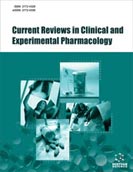Abstract
The practice of medicine depends, over a long time, on identifying therapies that target an entire population. The increase in scientific knowledge over the years has led to the gradual change towards individualization and personalization of drug therapy. The hope of this change is to achieve a better clinical response to given medications and reduction of their adverse effects. Tailoring of medicine on the road of personalized medicine considers molecular and genetic mapping of the individual. However, many factors still impede the smooth application of personalized medicine and represent challenges or limitations in its achievement. In this article, we put some clinical examples that show dilemmas in the application of personalized medicine such as opioids in pain control, fluoropyrimidines in malignancy, clopidogrel as antiplatelet therapy and oral hypoglycemic drugs in Type2 diabetes in adults. Shaping the future of medicine through the application of personalized medicine for a particular patient needs to put into consideration many factors such as patient’s genetic makeup and life style, pathology of the disease and dynamic changes in its course as well as interactions between administered drugs and their effects on metabolizing enzymes. We hope in the coming years, the personalized medicine will foster changes in health care system in the way not only to treat patients but also to prevent diseases.
Keywords: Personalized medicine, therapeutic dilemma, opioids, fluoropyrimidines, clopidogrel, oral hypoglycemic drugs.
[http://dx.doi.org/10.1093/bib/bbv060] [PMID: 26249224]
[http://dx.doi.org/10.1016/S0140-6736(19)31276-0]
[http://dx.doi.org/10.2147/PGPM.S179152] [PMID: 31308726]
[http://dx.doi.org/10.1038/clpt.2013.254] [PMID: 24458010]
[http://dx.doi.org/10.1213/ane.0b013e31817b796e] [PMID: 18713907]
[http://dx.doi.org/10.1200/JCO.2007.13.3934] [PMID: 18445839]
[http://dx.doi.org/10.1007/s00280-016-3054-2] [PMID: 27217046]
[http://dx.doi.org/10.1016/0959-8049(95)00573-0] [PMID: 8664058]
[http://dx.doi.org/10.1002/cpt.911] [PMID: 29152729]
[http://dx.doi.org/10.4322/acr.2018.049] [PMID: 30775324]
[http://dx.doi.org/10.3389/fonc.2018.00279] [PMID: 30087856]
[http://dx.doi.org/10.1016/0009-9236(95)90171-X] [PMID: 7586945]
[http://dx.doi.org/10.1016/j.ctrv.2016.08.002] [PMID: 27589829]
[http://dx.doi.org/10.1081/CBI-120002597] [PMID: 11962674]
[http://dx.doi.org/10.1038/clpt.2012.243] [PMID: 23419487]
[http://dx.doi.org/10.1002/cpt.1124] [PMID: 29923599]
[http://dx.doi.org/10.3390/pharmaceutics11050199] [PMID: 31052357]
[http://dx.doi.org/10.1200/JCO.2015.63.1325] [PMID: 26573078]
[http://dx.doi.org/10.1111/bcp.12821] [PMID: 26551538]
[http://dx.doi.org/10.1016/S0140-6736(09)62191-7] [PMID: 20079528]
[http://dx.doi.org/10.18553/jmcp.2017.23.1.57] [PMID: 28025925]
[http://dx.doi.org/10.1002/jcph.17] [PMID: 23381692]
[http://dx.doi.org/10.2217/fca-2016-0045] [PMID: 27539287]
[http://dx.doi.org/10.1155/2017/8062796] [PMID: 28421156]
[http://dx.doi.org/10.1161/CIRCINTERVENTIONS.119.007811] [PMID: 30998396]
[http://dx.doi.org/10.1016/j.jacc.2011.02.040] [PMID: 21700086]
[http://dx.doi.org/10.1016/j.jacc.2014.07.003] [PMID: 25190237]
[http://dx.doi.org/10.1093/ndt/gft103] [PMID: 23729489]
[http://dx.doi.org/10.1016/j.jacc.2010.11.024] [PMID: 21392639]
[http://dx.doi.org/10.1007/s00228-018-2564-8] [PMID: 30324301]
[http://dx.doi.org/10.1111/jth.13177] [PMID: 26512550]
[http://dx.doi.org/10.1007/s40262-020-00864-4] [PMID: 32056160]
[http://dx.doi.org/10.1016/j.trsl.2012.12.015] [PMID: 23340049]
[http://dx.doi.org/10.1016/j.ahj.2007.07.014] [PMID: 17892993]
[http://dx.doi.org/10.1503/cmaj.113-2126] [PMID: 24003187]
[http://dx.doi.org/10.1007/s11096-015-0118-z] [PMID: 25893489]
[http://dx.doi.org/10.1097/FJC.0000000000000451] [PMID: 27922911]
[http://dx.doi.org/10.2147/DDDT.S196535] [PMID: 30863011]
[http://dx.doi.org/10.1002/cpt.1105] [PMID: 29920652]
[http://dx.doi.org/10.1038/clpt.2013.105] [PMID: 23698643]
[http://dx.doi.org/10.3174/ajnr.A4481] [PMID: 26338921]
[http://dx.doi.org/10.1016/j.jacc.2013.03.037] [PMID: 23602770]
[http://dx.doi.org/10.1160/TH13-08-0642] [PMID: 24553730]
[http://dx.doi.org/10.1002/ccd.26428] [PMID: 26909669]
[http://dx.doi.org/10.20452/pamw.14931] [PMID: 31418753]
[http://dx.doi.org/10.1161/CIRCINTERVENTIONS.111.962183] [PMID: 22010189]
[http://dx.doi.org/10.1016/j.diabres.2011.10.029] [PMID: 22079683]
[http://dx.doi.org/10.1038/nrendo.2016.51] [PMID: 27062931]
[http://dx.doi.org/10.1002/dmrr.3109] [PMID: 30515958]
[http://dx.doi.org/10.1016/j.diabet.2015.04.001] [PMID: 25958125]
[http://dx.doi.org/10.1007/s00125-020-05181-w] [PMID: 32556613]
[http://dx.doi.org/10.2337/dci18-0033] [PMID: 30291106]
[http://dx.doi.org/10.4239/wjd.v7.i15.302] [PMID: 27555891]
[http://dx.doi.org/10.3399/bjgp17X689317] [PMID: 28126879]
[http://dx.doi.org/10.2337/dc18-0344] [PMID: 30072404]
[http://dx.doi.org/10.2337/dbi17-0045] [PMID: 30237159]
[http://dx.doi.org/10.2478/jtim-2020-0020] [PMID: 33062587]
[http://dx.doi.org/10.2337/dc17-1827] [PMID: 29386249]
[http://dx.doi.org/10.1097/MED.0000000000000311] [PMID: 27898586]
[http://dx.doi.org/10.1016/j.clinthera.2017.10.016] [PMID: 29174215]
[http://dx.doi.org/10.1016/j.diabres.2020.108025] [PMID: 31954752]
[http://dx.doi.org/10.1038/ng.3632] [PMID: 27500523]
[http://dx.doi.org/10.2337/diabetes.49.10.1643] [PMID: 11016447]
[http://dx.doi.org/10.1016/j.xphs.2017.04.078] [PMID: 28495567]
[http://dx.doi.org/10.2337/db14-1388] [PMID: 25510240]
[http://dx.doi.org/10.2337/dc16-0706] [PMID: 27493135]
[http://dx.doi.org/10.2337/dc18-2182] [PMID: 30885951]
[http://dx.doi.org/10.1016/j.amjmed.2011.07.033]
[http://dx.doi.org/10.1007/s00125-013-2856-6] [PMID: 23494446]
[http://dx.doi.org/10.7603/s40681-014-0008-z] [PMID: 25520921]
[http://dx.doi.org/10.1055/s-2007-979837] [PMID: 8911983]
[http://dx.doi.org/10.2337/db09-0143] [PMID: 19587354]
[http://dx.doi.org/10.1097/FPC.0b013e32835001e7] [PMID: 22209866]
[http://dx.doi.org/10.1038/clpt.2009.176] [PMID: 19794412]
[http://dx.doi.org/10.1093/hmg/ddu359] [PMID: 25015099]
[http://dx.doi.org/10.2147/pgpm.s5806] [PMID: 23226037]
[http://dx.doi.org/10.1111/j.1463-1326.2010.01324.x] [PMID: 21114608]
[http://dx.doi.org/10.1155/2013/374858] [PMID: 23509454]
[http://dx.doi.org/10.2337/dc17-1386] [PMID: 29326107]
[http://dx.doi.org/10.1111/jcpt.12710] [PMID: 29802808]
[http://dx.doi.org/10.1002/cpt.1484] [PMID: 31012484]
[http://dx.doi.org/10.4103/2231-4040.90879] [PMID: 22247890]
[http://dx.doi.org/10.1124/jpet.104.082370] [PMID: 15845861]
[http://dx.doi.org/10.1111/j.1742-7843.2006.pto_437.x] [PMID: 16867170]
[http://dx.doi.org/10.2337/dc15-2464] [PMID: 27271184]
[PMID: 11594240]
[http://dx.doi.org/10.1016/j.amjmed.2010.11.002] [PMID: 21194578]
[http://dx.doi.org/10.4093/dmj.2016.40.2.99] [PMID: 27126881]
[http://dx.doi.org/10.2337/db13-0227] [PMID: 23674605]
[http://dx.doi.org/10.1007/s00125-021-05402-w] [PMID: 33594477]
[http://dx.doi.org/10.1186/s12967-020-02316-w] [PMID: 32345312]
[http://dx.doi.org/10.1146/annurev-statistics-022513-115553]
[http://dx.doi.org/10.1016/j.fertnstert.2018.05.006] [PMID: 29935653]
[http://dx.doi.org/10.1002/ibd.20036] [PMID: 17206705]
[http://dx.doi.org/10.1016/j.cgh.2007.09.002] [PMID: 18054751]
[http://dx.doi.org/10.1172/JCI59255] [PMID: 21946256]
[http://dx.doi.org/10.1111/nyas.12757] [PMID: 25907167]
[PMID: 31511734]
[http://dx.doi.org/10.1111/pedi.12192] [PMID: 25182307]
[http://dx.doi.org/10.1167/iovs.07-1633] [PMID: 18765632]
[http://dx.doi.org/10.1016/S2213-8587(14)70050-6] [PMID: 24731673]
[http://dx.doi.org/10.3390/ijms21186842] [PMID: 32961860]
[http://dx.doi.org/10.1111/bcp.14426] [PMID: 32529759]
































